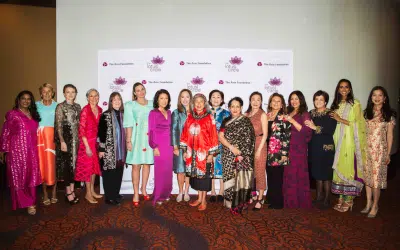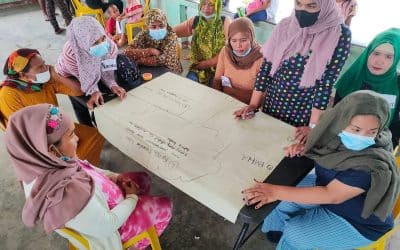InAsia
Insights and Analysis
A Momentous Moment for Mindanao
January 16, 2019
On January 21 and February 6, residents of areas affected by decades of conflict in the southern Philippines will cast their votes on a plan for regional autonomy that could bring an end to decades of armed conflict and civil unrest. If the referendum passes, the Bangsamoro Organic Law (BOL) will create a new autonomous region for central and western parts of Mindanao: the Bangsamoro Autonomous Region in Muslim Mindanao (BARMM).

Proposed Bangsamoro core territory. Credit: Philippines Office of the Presidential Adviser on the Peace Process
The foundations for the BOL were laid in the 1970s, when Imelda Marcos and the Moro National Liberation Front (MNLF) signed the ambitious but flawed Tripoli Agreement, whose failure ushered in two decades of armed violence. In 1996, President Fidel Ramos and the MNLF’s founder, Nur Misuari, tried again, with the so-called Final Peace Agreement (FPA). But the FPA lacked implementing legislation, and the legislative compromise that emerged five years later produced what President Benigno Aquino called a “failed experiment.”
All that is past.
Next week, voters in the currently constituted Autonomous Region of Muslim Mindanao (ARMM) and some adjoining “expansion” areas will pass judgment on two decades of negotiations between the Moro Islamic Liberation Front (MILF) and the successive administrations of Presidents Ramos, Estrada, Macapagal-Arroyo, Aquino, and Duterte. The negotiations resulted in a path to peace, built on the Framework Agreement on the Bangsamoro (FAB) signed in 2012, the Comprehensive Agreement on the Bangsamoro (CAB) signed in 2014, and the Bangsamoro Organic Law (BOL) adopted July 21 and now subject to referendum. The plebiscite will decide which areas are included in the newly constituted BARMM.
Meanwhile, tensions are running high. A bomb on New Year’s Eve in a shopping mall in the center of Cotabato City, the current seat of regional power, killed two and wounded 34, pushing public anxiety to the panic point. Officials have been warning of further attacks as the referendum approaches, and the region’s history lends credence to their warnings.
Yet, this time, the dynamics are different. In previous attempts, in 1989 and 2001, to marry an executive-level peace agreement with implementing legislation, dissatisfaction with the proposed laws was so acute that the MNLF and the MILF abstained from voting, and overall turnout was low. This time, the president, cabinet officials, senior leaders in Congress and the Senate, the current governor of the ARMM, and both the leadership of the MILF and a majority of MNLF leaders have publicly embraced the BOL as the best answer to these historical problems.
President Duterte’s approval ratings are high, and he has publicly endorsed the new law. Achieving peace in Mindanao was a key plank in his 2016 presidential campaign, and he remains the most influential voice for many in Mindanao, including minority Christian populations in the key cities of Cotabato and Isabela.

BOL signing ceremony at the Presidential Palace, August 6, 2018. Photo/Philippines Office of the Presidential Adviser on the Peace Process
A two-decade negotiation must inevitably impose compromises on all sides. During the final stages of the legislative process, amidst a raft of changes such as diminished police powers and reduced federal funds for the new region, the Senate edited the BOL preamble to enshrine the phrase “within the framework of the Constitution and the national sovereignty as well as territorial integrity of the Republic of the Philippines.” But although the final legislation is not the ideal of any of the parties, it has been embraced by all the key stakeholders, including the MILF and MNLF (excluding Misuari).
Key to that approval have been core elements of the CAB retained in the BOL, particularly recognition of the Bangsamoro people’s “distinct historical identity and birthright to their ancestral homeland.” Other key elements include the introduction of a regional parliament and greater fiscal autonomy for the new region.
Late polling suggests that ARMM voters will endorse the BOL, with a strong chance that some expansion areas will also do so. Success at the ballot will trigger a three-year transition period, with President Duterte appointing an 80-person Bangsamoro Transition Authority (BTA), led by the MILF, leading to elections in 2022.
The BTA will face a dizzying array of challenges, the foremost of which will be assuming the management of regional services for almost 4 million people, more than 50,000 government employees (many of whom are nervous about their jobs), and a budget of PHP 32 billion (USD 615 million).
A second, equally pressing priority will be decommissioning tens of thousands of armed combatants and helping them through the process of “normalization,” whereby “communities can achieve their desired quality of life, which includes the pursuit of sustainable livelihood and political participation within a peaceful deliberative society.” This process will have to be uniquely Filipino: the MILF forces are a mix of full-time combatants, “farmer fighters,” and many thousands of others with uncertain connections to the civilian mainstream. Global templates for post-conflict decommissioning will not apply. Many voices have warned of the risks if this process is poorly handled. There are still dozens of small armed groups that would welcome former fighters, particularly those flying the black flag.
Thirdly, in leading the Bangsamoro Transition Authority, the MILF will be expected to create an inclusive polity—what Chair Murad has described many times as a “Bangsamoro for all.” Genuine foundations have been laid between Muslims and Christians, with indigenous peoples, and among previously estranged Moro groups. But overcoming deep historical prejudices as groups jockey for precedence and a seat at the table will require statesmanship of the highest order.
Public expectations will be high. Many people are expecting an immediate “peace dividend.” But ratification of the BOL will be just the first step—though a historic step, to be sure—in ending violent conflict in Mindanao. Several armed groups have pledged allegiance to ISIS, while others continue campaigns of kidnapping and extortion. Local political disputes frequently trigger violence that can quickly entangle regional adversaries. Disputes over land are still the most common cause of local conflicts. Citizens in the potential BARMM live these realities every day.
If the BOL is ratified, however, there will be sound reasons for optimism. The people of Mindanao will have the opportunity to craft their own answers to these challenges, and this, in essence, has been the heart of their demands.
The votes on January 21 and February 6 will be historic. Hopefully, they will also be peaceful, free, and fair, reflecting the best sentiments of those seeking peace.
Sam Chittick is The Asia Foundation’s country representative in the Philippines and a long-term advisor on the Bangsamoro peace process. He can be reached at [email protected]. The views and opinions expressed here are those of the author, not those of The Asia Foundation.
3 Comments
About our blog, InAsia
InAsia is posted and distributed every other Wednesday evening, Pacific Time. If you have any questions, please send an email to [email protected].
Contact
For questions about InAsia, or for our cross-post and re-use policy, please send an email to [email protected].The Asia Foundation
465 California St., 9th Floor
San Francisco, CA 94104
The Latest Across Asia
Program Snapshot
May 2, 2024
News
April 25, 2024

2024 Lotus Leadership Awards
The Lotus Leadership Awards recognize contributions towards gender equality in Asia and the Pacific







Why is Nur Misauri not on board with the BOL ? Is this merely his usual petulance and thin-skinned ego ? Or is there something
more tangible to be found in land, politics or Bangsamoro Islam ?
Great summary Sam. Looks like a very interesting time ahead for the region – miss it. Incidentally, why are there two polling dates?
Those the carry the black flag would be the spoilers, but likely once the territories have been firmed up and true intent of the BOL is implemented, this will usher a new and progressive era in the region.